Salmon sport-fishing outlook for 2021 could resemble 2020 with improvements as well as ongoing struggles, plus get ready to gear up for summer pink salmon Leave a reply
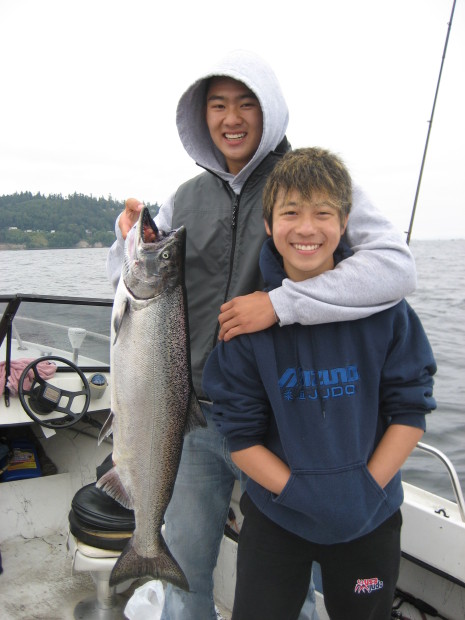
By Mark Yuasa
It’s hard to believe the calendar has already rolled into the second month of 2021! But, before saying goodbye to 2020, it’s a tradition of mine to look back at how salmon fisheries fared before dusting off the crystal ball to see what’s in store for the upcoming season.
While it was easy to dwell on the myriad of challenges in 2020 – a statewide fishing ban last spring followed by angler protests; big cutbacks to winter chinook fisheries; and adjustments to fishing activities or none thereof linked to an abysmal “COVID-19” cloud – there was wiggle room to remain optimistic without drowning in a rip current of bad news.
I’m not suggesting anglers and the sport-fishing industry economy didn’t take a UFC-like punch in the face, but it’s how resilient the situation was handled that eventually led to some fun-filled fishing excitement.
“I think it was a mixed bag and a lot of it depended on where you were fishing and what you were fishing for,” said Mark Baltzell, a Washington Department of Fish and Wildlife (WDFW) salmon manager. “We saw decent (chinook) salmon catches in the Strait of Juan de Fuca and San Juan Islands, but none of that translated into what happened in Puget Sound.”
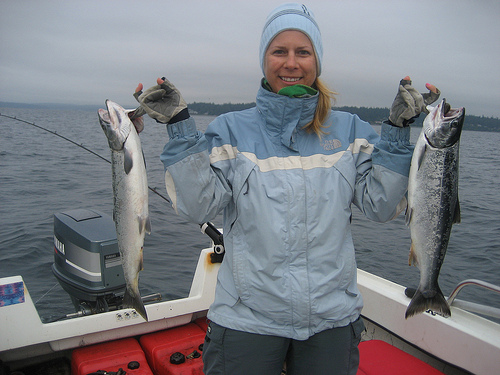
For starters, enthusiasm glowed over the dark cloud when fishing gradually reopened in early summer. A high point occurred in June when the central Puget Sound (Marine Catch Area 10) coho fishery had anglers limiting at times on 2- to 4-pound resident fish.
Once July rolled around, the Strait from Sekiu to Port Angeles (Areas 5 and 6) and the San Juan Islands (Area 7) saw a fairly good catch rate right out of the starting gate for summer hatchery kings.
At Sekiu, the WDFW preliminary catch data showed the best period was July 1-12 when 3,030 boats with 7,328 anglers retained 2,677 hatchery chinook (roughly one keeper for every 2.7 anglers) and 1,291 coho, and released 8,478 hatchery and wild chinook and 3,494 coho.
The San Juan Islands saw the best success from July 1-12 (average of one king per every 9.0 per rods) and then a gradual dip as the season lingered on. An estimated 6,709 boats with 14,971 anglers July 1-31 kept 1,353 hatchery chinook and released 2,248 hatchery and wild chinook. The overall hatchery-mark rate July 1-31 on the WDFW test fishery boat was 74.5 percent. The hatchery chinook fishery reopened Aug. 22-31 but fishing was slow to fair at best.
As kings migrated into northern Puget Sound (Area 9) open July 16-Aug. 15 and central Puget Sound (Area 10) open July 16-Aug. 31 the catches were lackluster.
“We had full hatchery chinook fishing seasons in Areas 9 and 10, and that hasn’t happened if you look at recent past history,” Baltzell said. “We saw poor catch rates for chinook all through the summer in those areas. Lower returns for hatchery chinook stocks likely affected the catch rates.”
Hatchery chinook spawning goals, according to Baltzell, weren’t achieved at the Chambers, Deschutes, Hoodsport and George Adams hatchery facilities, and the Minter Creek facility just did OK.
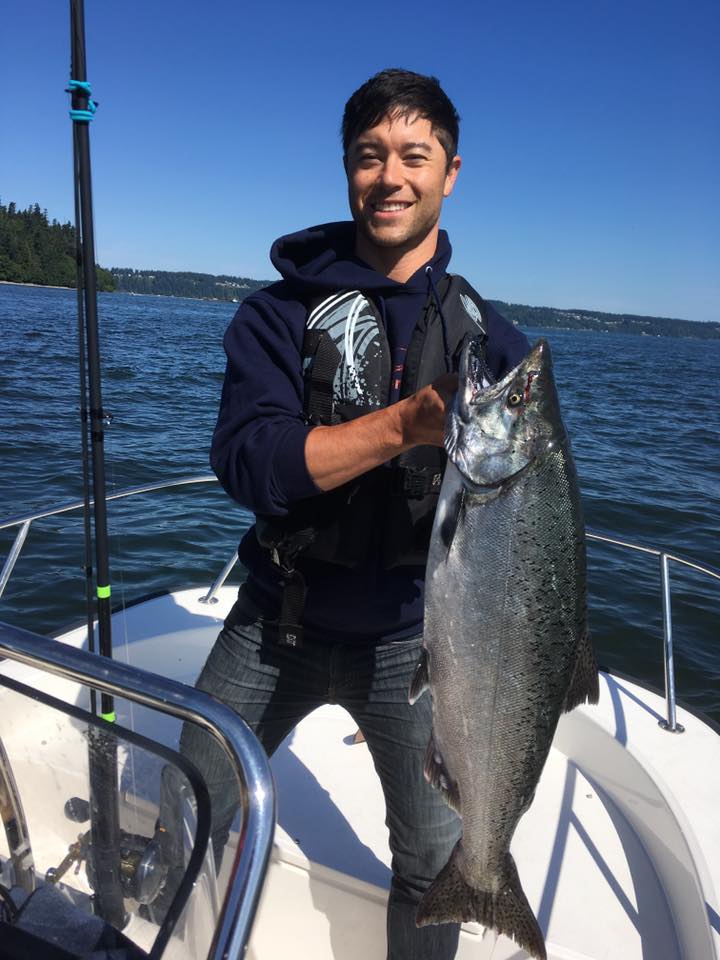
The first week (July 16-19) in Area 9 saw the best fishing where 4,927 boats with 11,599 anglers retained 1,050 hatchery chinook and 729 coho, and released 2,851 chinook and 1,288 coho. Catches saw a bit of an increase July 27-Aug. 3, but nowhere near the first four days of the opener, and the overall catch July 16-Aug. 15 was 0.07 chinook per rod.
The best period in Area 10 was Aug. 3-9 when 2,163 boats with 4,299 anglers kept 389 hatchery chinook and 882 coho, and released 1,941 chinook and 505 coho. Catches stayed steady Aug. 10-16, and the overall catch July 16-Aug. 31 was 0.05 chinook per rod.
“Another strange thing occurred in Lake Washington where (Ballard Locks) fish counts looked good for chinook, but never translated to survival of natural or hatchery stocks once they entered the lake,” Baltzell said. “There have been ongoing issues below the locks area with pinnipeds as well as warm water as fish progressed (into Lake Union and Lake Washington). Unfortunately, we’ll continue to have survival issues in the lake for both fish coming in and going out.”
In south-central Puget Sound (Area 11), the best period was July 27-Aug. 2 when 2,373 boats with 4,059 anglers kept 506 hatchery chinook and 143 coho, and released 806 chinook and 306 coho. Catches remained spotty overall from Aug. 3-23 (normally the peak period) although the kings caught were larger than normal including a few in the 20- to 25-plus pound range.
As summer progressed into fall, the migrating Puget Sound coho runs appeared with some higher return sizes while good number of others waned. The low- to average-size returns equated to fair coho fishing at best.
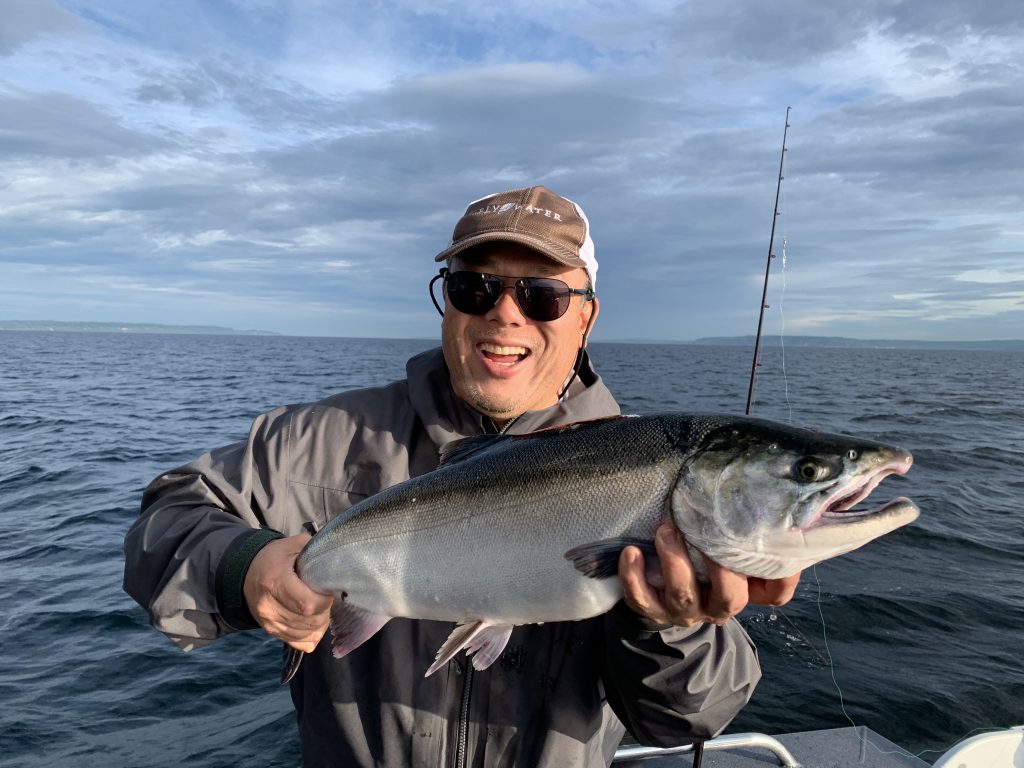
Baltzell indicated wild coho stocks grappled to meet spawning escapement goals in the Snohomish system and the Strait of Juan de Fuca despite restricted fisheries.
Puget Sound chum returns were much poorer than expected, which led to no non-tribal commercial fishing in southern and central Puget Sound, and very limited fishing in Hood Canal where chum didn’t meet escapement goals. Tribal fisheries also ended up closing sooner than expected in the fall season.
Early Puget Sound 2021 salmon outlook
The WDFW staff will unveil 2021 salmon forecasts at a public meeting on Feb. 26, and early signs are pointing to potential roadblocks similar to what occurred in 2020 with some “here and there” improvements.
“If I was a betting man, I’m thinking the majority of forecasts will be similar to last year,” Baltzell said. “With so many different populations of salmon in Puget Sound there will be improvements, and the usual struggles to meet wild fish escapement in places where we’ve had ongoing issues. Unfortunately, we can expect things to be just as difficult as last year.”
The “hot topic” in crafting 2021 Puget Sound salmon fishing seasons will hinge on constraints of certain wild chinook stocks that are protected under the Endangered Species Act including the Stillaguamish, Snohomish and mid-Hood Canal.
Judging the big picture, Puget Sound coho returns in 2021 could see improvements based on an early WDFW guidance document released last week revealing wild coho stocks were gaining ground.
The Puget Sound wild coho return in 2021 is expected to be 314,566 up from 163,221 in 2020 and 294,201 in 2019. The 2021 hatchery coho forecast hasn’t been determined yet, but was 366,284 in 2020 and 413,419 in 2019.
This being an odd-numbered year equates to pink salmon appearing in the Puget Sound region. They usually provide anglers with an extra fishing opportunity in both marine areas and some rivers, but a bonus bag limit for the moment appears doubtful.
Early assessments, by Mickey Agha, a WDFW biologist, indicate the pink returns could be on par with the 2019 forecast of 608,388.
This is surprising considering pink fishing in Puget Sound was excellent at times and returns were fairly good in some southern Puget Sound river systems. WDFW staff on a recent call tempered down what to expect this summer for pinks since there are going to be impacts with northern Puget Sound river systems. This was also conservative measure WDFW took of their pink predictions in 2019. Plus, drought and warm in-river water conditions has led to a dramatic survival issues for pinks in recent years.
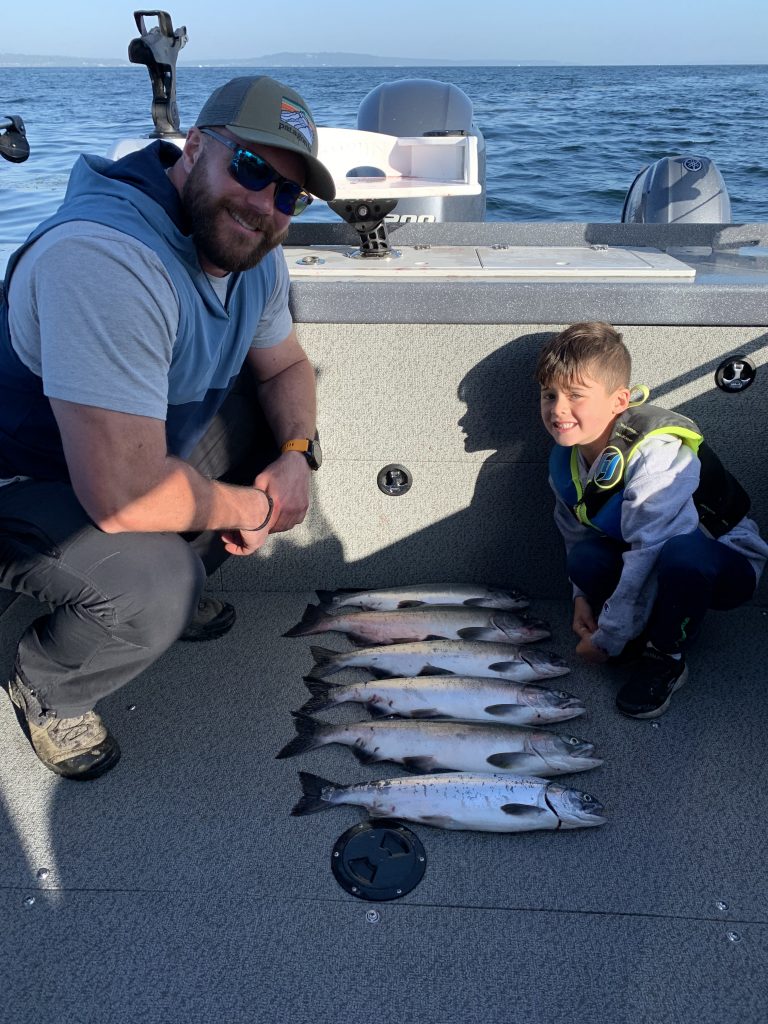
Don’t expect any changes for Puget Sound chum returns in 2021 as they’re continuing an uphill battle.
Lastly, the winter chinook fishing seasons in Puget Sound and Strait of Juan de Fuca were the hardest hit in 2020/2021, and represented a loss of about 24 months of fishing time compared to 2019/2020. Increasing more fishing time is top on the list of many sport anglers and the WDFW sport advisory board constituents.
“Our hope is to get back some winter opportunities, but we need to see what it looks like in the big picture and right now I just don’t know,” Baltzell said. “We’re trying to align all the desires of time on the water and prioritize what opportunities work best for recreational fishermen. If that means summer isn’t as high on the priority list then maybe we can adjust to more fishing time in the winter.”
Carl Nyman, president of the Puget Sound Charter Boat Association and a WDFW sport-fishing advisory board member, is pushing for creative ways to rebuild more time on the water for winter chinook.
“The tool of using 5- and 4-inch Tomic plugs has been a longtime practice of Puget Sound chinook fishers to target larger fish and keep most of the shakers off,” Nyman said. “I would much rather be able to fish for two or more winter months dragging plugs for hours to get a few good bites than release shaker after shaker and burn through our allowed encounters.”
Restoring more fishing areas in the winter will avoid cramming effort into one area like central Puget Sound this winter where smaller fish are concentrated and reducing the minimum size limit from 22- to 20-inches in the winter are other ideas to extend time on the water.
In mid-January, the Pacific Salmon Commission held a meeting, where Laurie Weitkamp with NOAA Fisheries, provided an update on ocean conditions. It appears there are signs of improvement from the last couple of years although migrating salmon runs are still struggling from those previous dire conditions.
One concern is the extra layer of warmth in the ocean environment that continues to wax and wane throughout the summer and into the fall. La Niña is likely to continue through the Northern Hemisphere winter of 2020-21, with a potential transition during the spring 2021.
Ocean salmon fisheries recap
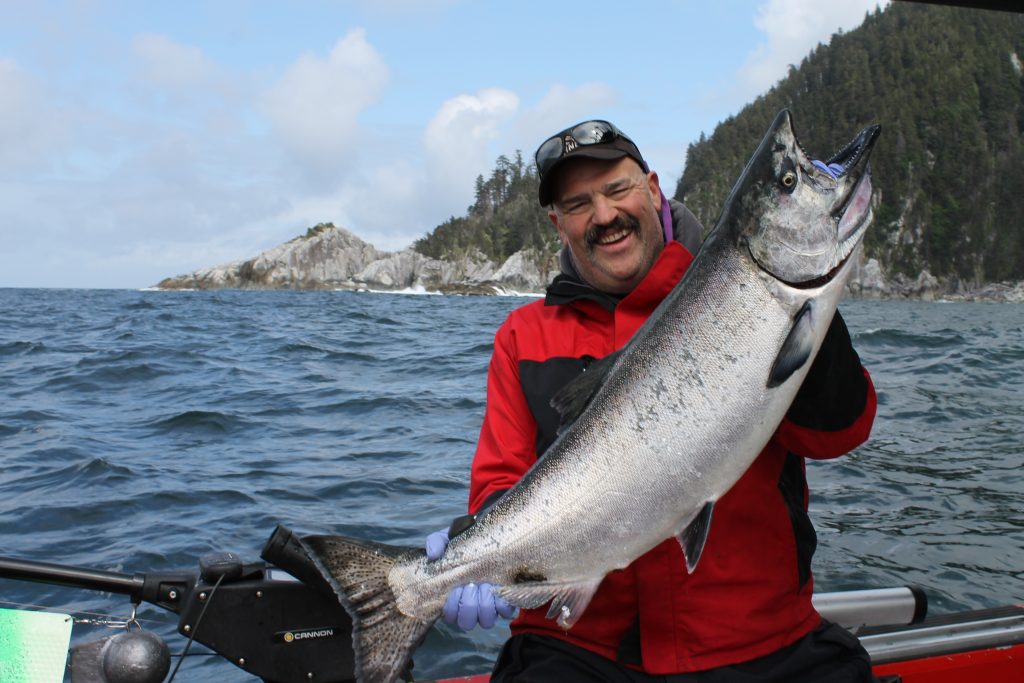
Tom Nelson, host of the 710 ESPN The Outdoor Line Radio Show, holds up a nice ocean caught summer king salmon.
No doubt the 2020 ocean salmon fisheries will go down as a big disappointment.
“As expected with our very low coho catch quotas in the ocean we had a couple fisheries (Ilwaco and Neah Bay) close very early in the summer,” said Wendy Beeghley, the WDFW coastal salmon manager. “Fishing was good off and on as has been the way for the last several years.”
The catch at Ilwaco this past summer jumped around dramatically going from 0.31 to 0.33 fish per rod from June 20-28 and then as high as 1.52 to 0.92 from July 6-26.
At Neah Bay, despite the marina, boat launches and surrounding land being closed, it was still in close proximity to Sekiu allowing boats to access the ocean. Neah Bay anglers averaged about half a fish per rod from June 20-July 26 before hitting close to one-plus fish per rod from July 27-Aug. 9.
Due to COVID closures La Push another north coastal port saw virtually no effort nor catch, and had a full season from June 20-Sept. 30. A few boats from Westport made the long haul to the fishing grounds, but otherwise access was difficult.
The south-central coast at Westport saw erratic catch success and also had a full season from June 20-Sept. 30. It was 0.68 to 1.24 fish per rod in the July and August timeframe. The catch was primarily chinook in July and switched to coho in August.
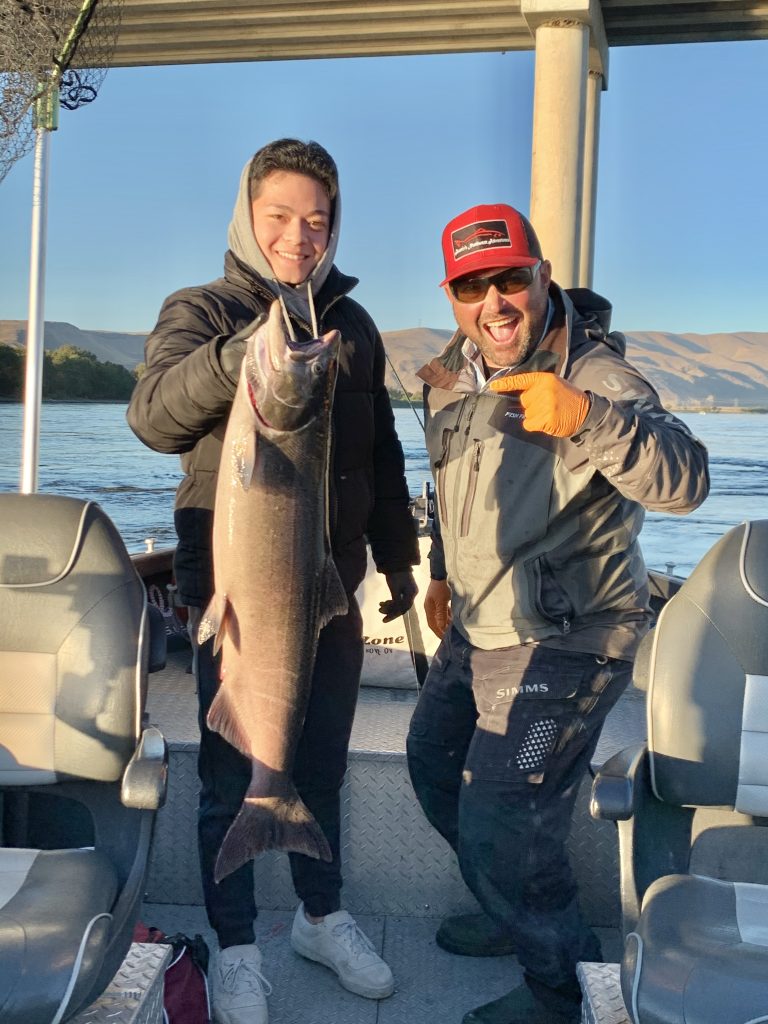
“We had windy weather issues at Westport, which is a typical occurrence for the summer time, and then in September the smoke (from wildfires) was pretty brutal on anglers,” Beeghley said.
Both Beeghley and Baltzell summarized the size of summer chinook was relatively healthy with big, fat fish hitting the scales off the coast and clear into Puget Sound and the Columbia River. The ocean summer commercial salmon fisheries also saw the same quality of kings in their catches too.
Signs of hope in 2021 coastal salmon outlook
Judging by early preliminary predictions for 2021, it appears the worst for some coastal salmon fisheries might be in the rear-view mirror although more forecasts should come to light soon painting a much clearer picture.
“The big glimmer of hope for me is the coho jack numbers we saw on the Columbia River,” Beeghley said. “In general, the overall returns for chinook and coho was good. We also saw healthy jack counts for chinook in the Columbia too.”
A strong 2020 Columbia coho jack return – the highest seen since 1977 when 90,092 returned to hatcheries – could be the much-needed relief in 2021. Fishery managers base the following year’s adult coho forecast on how jack returns looked the year before.
Coho are the main driver for ocean fisheries from June to September off Neah Bay, La Push, Westport and Ilwaco as well as late summer and early fall in-river salmon fishing seasons.
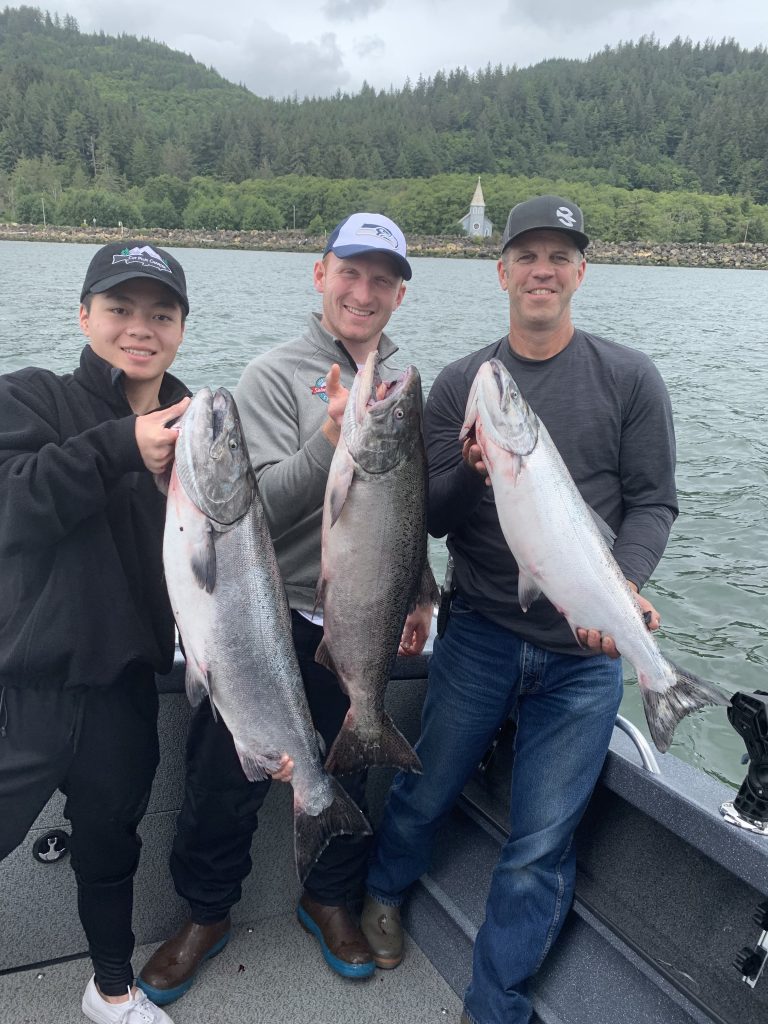
When looking at coho seasons dating back 10 years, the 2020 season landed right on the same page as 2010, 2011 and 2012 when it was in the doldrums. The situation improved in 2013 and was a lot better by 2014 although there wasn’t many coho caught in the ocean fisheries.
Fishery managers indicate the 2020 adult coho returnees went out into the ocean as juvenile fish and suffered a big die-off (most likely related to the “Blob”) since all indications showed a great outgoing pattern for 2019 returns.
“The ocean is a mixed stock fishery and all it takes is one poor salmon return to limit everything especially coho runs on the northern coast,” Beeghley said. “However, the main players being the Columbia fish is always a positive sign for the ocean fisheries. It is nice to see as they dilute the impacts on weaker fish returns in mixed stock fisheries.”
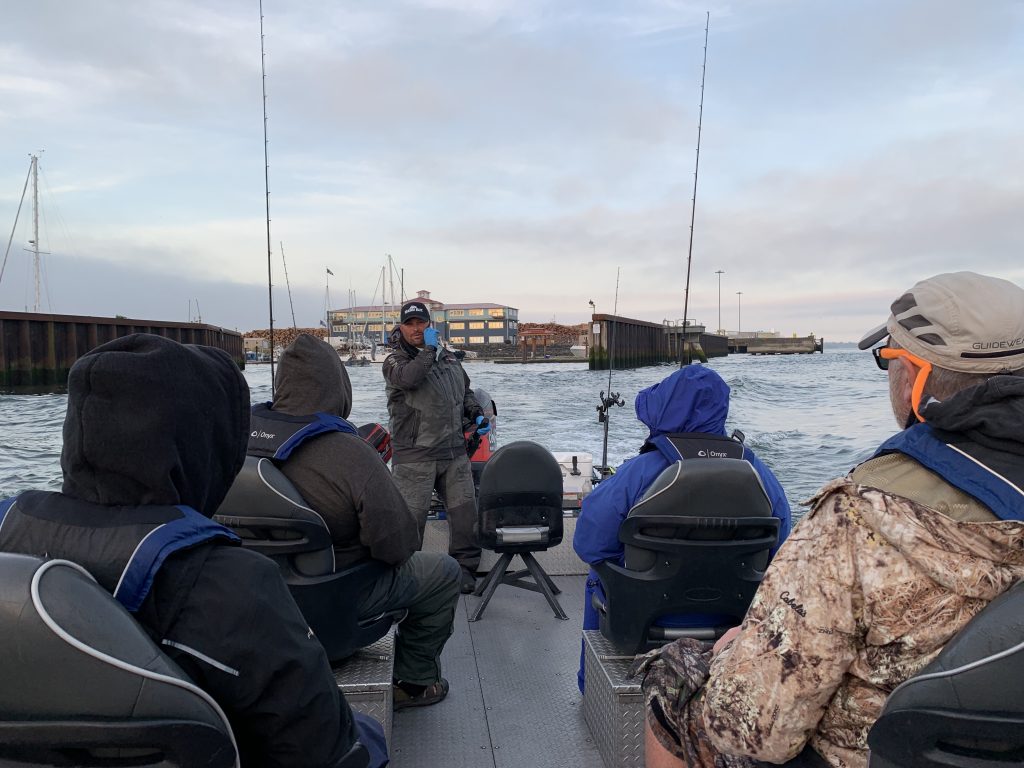
The preliminary northern coastal wild coho return forecast in 2021 is 156,345 up from 118,858 in 2020 and down somewhat from 182,831 in 2019.
The Columbia fall forecasts will be released soon, but early signals show continued improvement for a “bright” fall chinook predicted return of 324,760 last year and 2021 could be a mirror image. Preliminary tule fall chinook returns last year were similar to a forecast of 95,460, and are a prized catch in summer ocean fisheries and at Buoy 10 near the Columbia mouth.
For in-river sport salmon chasers, the positive news is the Upper Columbia summer chinook forecast of 77,600 up from 38,300 forecast and an actual return of 65,494 in 2020. Also known as “June Hogs,” fishing was open in July of 2020 and created fishing frenzy near Rocky Reach Dam to Chelan Falls and other areas further downstream.
Those who relished the unexpected 2020 Upper Columbia sockeye summer season – the highest return since 2016 – might not like what’s in store this summer.
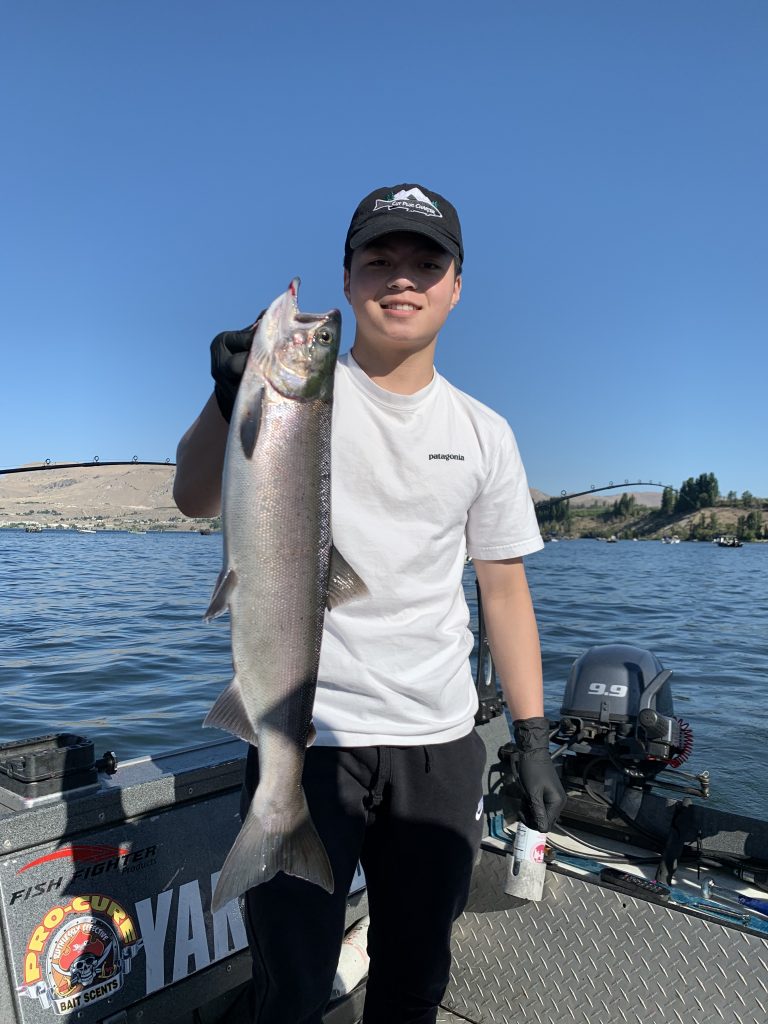
The prediction is 155,600 sockeye, down considerably from 2020’s forecast of 246,300 and an actual return of 345,018. Many will be waiting with “bated breath” on in-season dam counts to see if a fishery will occur in the Upper Columbia’s Brewster Pool.
How all these Puget Sound, Columbia River and coastal salmon forecasts correlate into exact fishing seasons won’t be finalized until April 8-14, but WDFW will unveil the 2021 salmon forecasts at a public virtual meeting on Feb. 26. This should give us a little bit of sense as to what lies on the summer and fall fishing horizon.
The Pacific Fishery Management Council (PFMC) will announce three ocean salmon season and quota options during webinar meetings from March 2-11.
Other upcoming meetings are – Feb. 25, 2021 Willapa Bay and Grays Harbor salmon forecasts and fishing opportunities; March 16, first North of Falcon (NOF) Zoom public meeting on preliminary Puget Sound and inner-marine area fisheries; March 17 and April 1, Columbia River fisheries discussion via Microsoft Teams meeting; March 23 and March 25, public meetings via Zoom on Puget Sound salmon fisheries; March 31, second NOF public meeting via Televideo; and April 8-15, PFMC meeting via webinar to adopt final salmon fishing seasons. For a list of meeting information, go to https://wdfw.wa.gov/fishing/management/north-falcon/public-meetings.
(Note: Due to the pandemic all meeting dates and times are subject to change and will be held virtually or via Zoom, Televideo, Microsoft Teams and webinar.)

